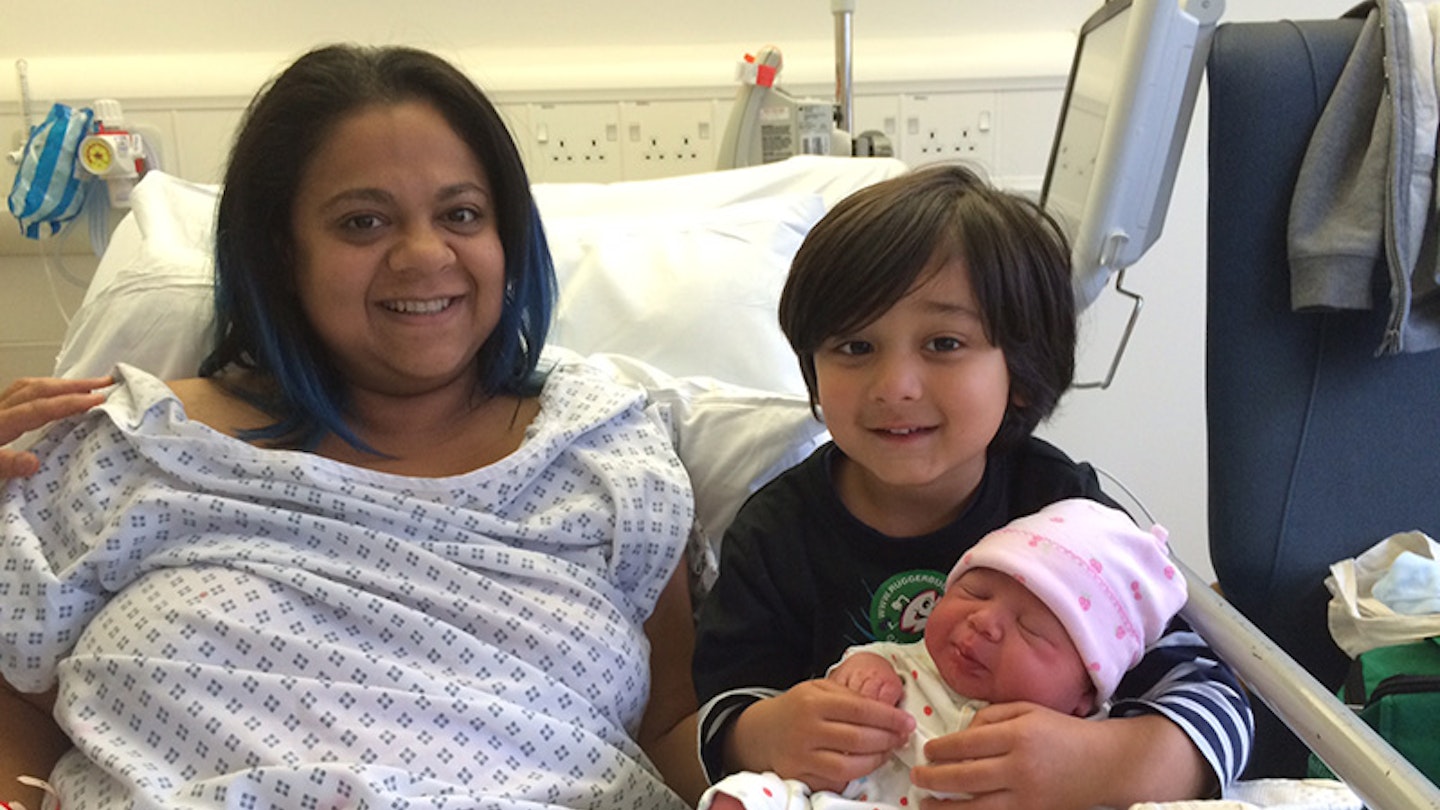Raeesa Cooke, 35, a drama teacher, lives in Stansted, Essex, with husband Matthew and children Zane, 4, and Astrid, 12 weeks.
I had gestational diabetes (GD) throughout my first pregnancy without knowing. Somehow, three blood tests at various stages of pregnancy showed up negative. It was only at 39 weeks that I got my diagnosis and had an emergency c-section. It explained everything – my breathlessness, exhaustion and food cravings. And, as big babies can be a sign of the mother having gestational diabetes, the size of my son (he weighed 10lbs at birth).
GD was the first things on my mind when I found out I was pregnant again. I knew from my research that it's common to get it again with a second baby. So it wasn't a surprise at 12 weeks when my glucose tolerance test confirmed it. I'd been having strong cravings for carbohydrates like bread, which is unusual for me. But after my first experience, it was nice to know so early this time what I was dealing with.
I was determined to commit 100 per cent to a diet that would keep my baby as safe as possible
I was given a finger prick test kit to measure my blood sugar levels at home several times a day, and given advice on diet to control them. I was determined to commit 100 per cent to a diet that would keep my baby as safe as possible. I found an online forum for mums to share advice and meal plans. It was invaluable. Processed sugar like biscuits was a complete no, and I cut out natural sugar like fruit. Finding the right balance of carbs so that my sugar levels weren't too high was a challenge. I stayed strong, but there were some days when all I wanted was cake – especially at celebrations like my birthday and wedding anniversary.
At 20 weeks I was prescribed tablets to help manage my GD as my sugar levels first thing in the morning were still too high. The medication helped, but the rule about eating no sugar still applied.
To my embarrassment, I started getting hot and dizzy, then passed out!
At 37 weeks, having felt itchy all over my body, I tested positive for a liver condition called obstetric cholastasis. It was unrelated to my GD but, combined with the fact my baby was measuring large, doctors felt the safest option for me was a planned c-section. I was happy to be booked in for the following week. That morning at 7am, Matthew and I were admitted to the ward. After a midwife had checked me and the baby and I'd signed the papers agreeing to the procedure, an anaesthetist visited to insert a cannula into my hand. I've always hated needles. To my embarrassment, I started getting hot and dizzy, then passed out! I soon came round and started feeling better!
Then, the anaesthetist walked Matthew and I into theatre where we were greeted by several smiling medics. I felt nervous and excited about meeting my baby. I sat on the bed, leaning over as the anaesthetic was injected into my spine. I didn't mind this bit because a numbing spray had been applied to the area, meaning I couldn't feel a thing. It was amazing how quickly everything happened after that. The staff helped me lie back, then my legs gradually started to get numb. It's a strange sensation – you can sort of feel your body but sort of can't!
A screen went up shielding my bump, and Matthew squeezed my hand. ‘Don't you want to watch?’ I asked him, half joking. It was a definite no! The medics kept reassuring me and asking if I was OK. By now I was feeling more relaxed, even cracking jokes. It helped that I'd had a c-section with my first baby, so knew what to expect.
The head was engaged quite far in my pelvis, meaning it had to be yanked firmly
I felt a dull, painless tugging feeling in my bump as the surgeon tried to pull the baby out. The head was engaged quite far in my pelvis, meaning it had to be yanked firmly. Then, I heard a cry as my baby was lifted out and taken to the side of the room for checks. Matthew followed, as agreed beforehand, to cut the umbilical cord. Our baby girl was gently wiped down and placed on my chest for skin-to-skin cuddles. I looked at her perfect face and knew she was alright. All the sacrifices, all the hard work controlling my diet, had been worth every second to have a healthy baby. I felt completely overwhelmed with love.
I was told that, as soon as the placenta left my body, I could start eating normally again. So as soon as the three of us were settled on the ward, Matthew popped to the shops to buy cupcakes. That first bite tasted amazing; the sweetness was so intense!
Six weeks after the birth I was tested again for GD and told it had completely gone. But having it means that I'm more susceptible to type 2 diabetes, so now that the newborn stage is over, I'm slowly bringing myself back to a sensible low-sugar diet. I'm proof that a diagnosis of GD doesn't mean you can't control the condition, or have a healthy pregnancy and baby.
Three thing I'd tell my friends
-
If you have a diagnosis of GD, listen to what your dieticians advise but don't forget to see what other mums who have (or have had) the condition think too. For meal plan and recipe suggestions, gestationaldiabetes.co.uk was invaluable.
-
Remember, the condition is only for a few weeks or months, not your whole life!
-
Don’t fixate on what you can't eat and remind yourself that your new lifestyle is for the benefit of your baby.
